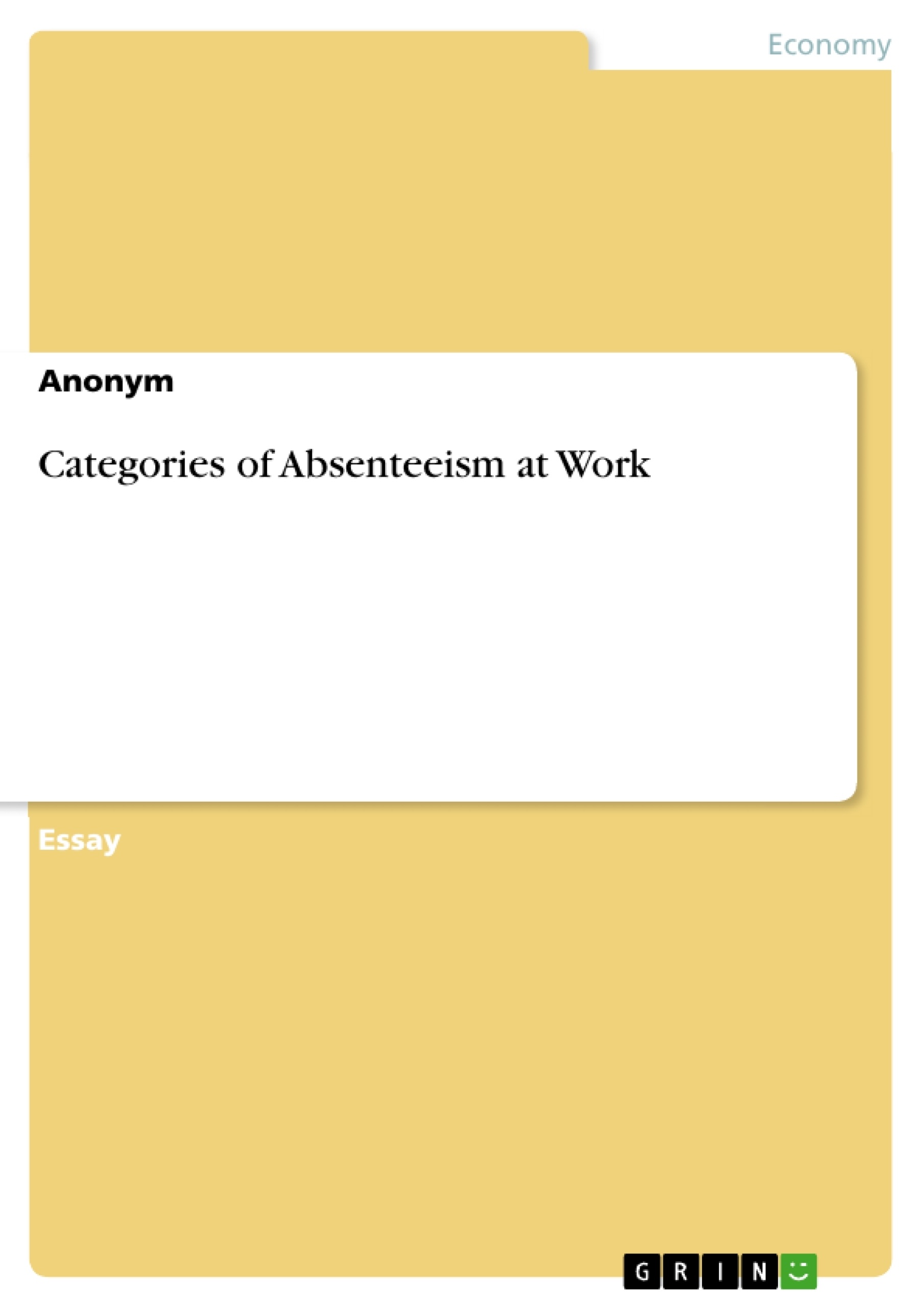The term of absenteeism is generally used to describe unscheduled employee
absences from the workplace. But there are two different categories. Either
- valid absenteeism: refers to employees who are absent for reasons beyond
their control; like sickness and injury. In a labour relations context this means
that it can not be remedied or treated by disciplinary measures.
- invalid absenteeism:refers to employees who are absent without authorization
for reasons which are within their control. For instance, an employee who is on
sick leave even though he/she is not sick, and it can be proven that the
employee was not sick, is guilty of culpable absenteeism. In a labour relations
context this means that progressive discipline can be applied.
or more elaborated
- white absenteeism: In the case of white absenteeism, the employee is
obviously ill. For example if he or she has high fever or a broken leg.
- grey absenteeism: Illnesses which are psychological or psychosomatic, such
as headache, stomachache or tiredness can lead to grey absenteeism
because in these cases, diagnoses are hard to make.
- black absenteeism: it is spoken about black absenteeism if someone who is
not ill has reported himself/herself as sick. This black variant of absenteeism is
often also called illegal absenteeism. In the cases of black and grey
absenteeism exists a degree of freedom to absenteeism.
Table of Contents
- Absenteeism
- Costs of Absenteeism
- Reasons for absenteeism
- Different companies - different forms of absenteeism
- Developing absence Policies
Objectives and Key Themes
This text explores the phenomenon of employee absenteeism in the workplace, examining its various forms, causes, and consequences. The author aims to provide a comprehensive understanding of absenteeism, highlighting the significant costs associated with it and the factors that influence its prevalence in different organizations.
- The different types of absenteeism, including valid, invalid, white, grey, and black absenteeism.
- The financial impact of absenteeism on businesses, including direct and hidden costs.
- The factors that contribute to absenteeism, ranging from personal circumstances to workplace culture.
- The relationship between group norms and absenteeism, highlighting the importance of social relations within a workplace.
- Developing effective absence policies to address and manage absenteeism in organizations.
Chapter Summaries
- Absenteeism: This chapter defines and differentiates between various types of absenteeism, including valid, invalid, white, grey, and black absenteeism, outlining the legal and ethical considerations associated with each.
- Costs of Absenteeism: This chapter discusses the substantial financial costs associated with absenteeism, encompassing both direct costs like sick leave benefits and indirect costs like lost productivity and overtime.
- Reasons for absenteeism: This chapter explores the multitude of factors that contribute to absenteeism, encompassing both personal and organizational influences. It emphasizes the role of workplace environment, employee satisfaction, and social relationships in determining absenteeism rates.
- Different companies - different forms of absenteeism: This chapter examines how absenteeism varies across different companies, emphasizing the impact of organizational culture and societal factors. It highlights the role of group norms and supervisory relationships in shaping employee absence.
- Developing absence Policies: This chapter emphasizes the importance of effective absence policies to address and manage absenteeism. It outlines the importance of data collection and analysis in identifying trends and addressing root causes.
Keywords
The primary keywords and focus topics of this text are: absenteeism, valid absenteeism, invalid absenteeism, white absenteeism, grey absenteeism, black absenteeism, costs of absenteeism, lost productivity, employee motivation, workplace culture, group norms, supervisory relationships, absence policies, data collection, and analysis.
- Quote paper
- Anonym (Author), 2007, Categories of Absenteeism at Work, Munich, GRIN Verlag, https://www.grin.com/document/138252




